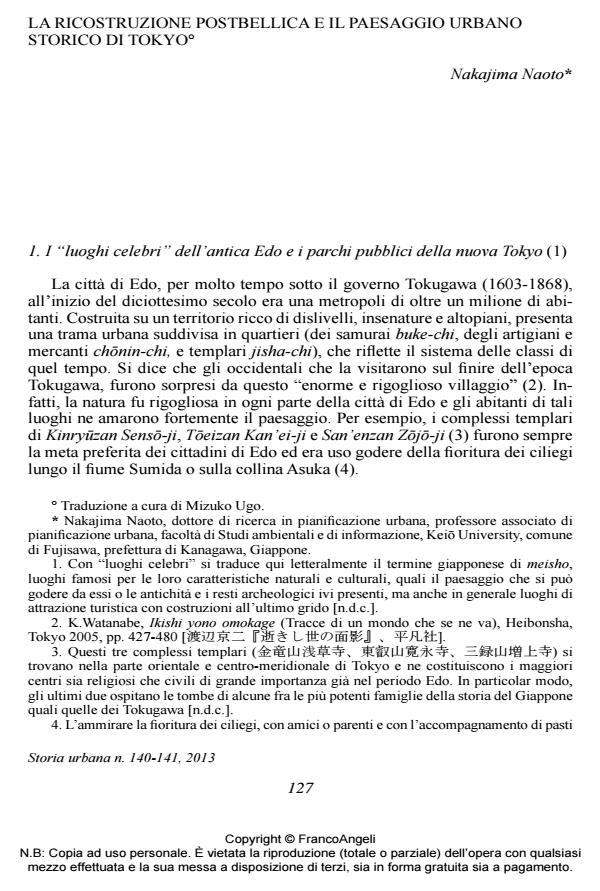Postwar Reconstruction Planning and Historic Landscape in Tokyo
Journal title STORIA URBANA
Author/s Nakajima Naoto
Publishing Year 2014 Issue 2013/140-141
Language Italian Pages 27 P. 127-153 File size 2753 KB
DOI 10.3280/SU2013-140005
DOI is like a bar code for intellectual property: to have more infomation
click here
Below, you can see the article first page
If you want to buy this article in PDF format, you can do it, following the instructions to buy download credits

FrancoAngeli is member of Publishers International Linking Association, Inc (PILA), a not-for-profit association which run the CrossRef service enabling links to and from online scholarly content.
This paper analyzes the transformation of the historic urban landscape of Tokyo after the Second World War, based on some case studies in specifi c areas and discourses by leading planners and architects of that time. Tokyo, which had been keeping its historic urban landscape mainly as famous places and public gardens, was burned down by frequent air attacks. While numerous buildings were lost in the war and then newly constructed after the war, historic canals, moats and public spaces with water, which had been the specifi c characteristics of the urban landscape of Tokyo since the Edo-era, after the war were often in danger as sites to be developed or left as rubble yards. In fact, some canals, moats and ponds were reclaimed rejecting the numerous calls for preservation made by the opposition. Ishihara Kenji, who was the proponent of the Movement for civic art in Japan and the representative opponent to the destruction of historic urban landscape, in 1959 raised the fundamental issues of the rights for public spaces alongside individual rights, based on the observation for the fl ood of billboards from the train windows. The war, including the damage, the defeat and the reconstruction, had weakened the citizen’s consciousness for public nature and communality of urban landscape.
Keywords: Postwar Restoration City Planning Historic Urban Landscape Waterscape Ishihara Kenji
Nakajima Naoto, La ricostruzione postbellica e il paesaggio urbano storico di Tokyo in "STORIA URBANA " 140-141/2013, pp 127-153, DOI: 10.3280/SU2013-140005